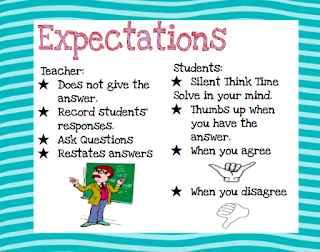6 Fun Ways to Go Digital with Number Talks
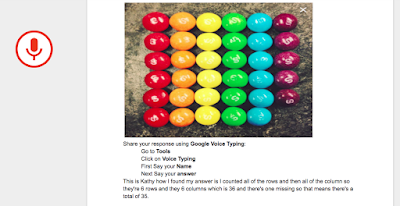
One of the cornerstones of a solid elementary math block are activities that support students in developing numerical literacy. Developing numerical literacy in the elementary classroom will support students in being confident problem solvers, and engage in mathematical discussions at a higher level. Number talks are one such activity that builds students numerical literacy and are taking place in classrooms on a daily basis.
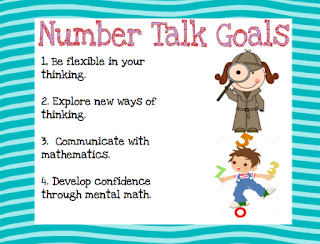
If you are not familiar with number talks here is the gist of it. The goal of a number talk is to give your students an opportunity to use mental math strategies to solve a problem. That’s right no paper, whiteboards or pens, just solve the problem in your head.
The conversation that occurs after the number talk is teacher facilitated with students sharing answers and their strategy. This process supports students learning from each other and teachers assessing students thinking and what strategies they use naturally.
Teacher says: How can you solve this problem by doing it in your head? Give me a thumbs up when you have a solution!
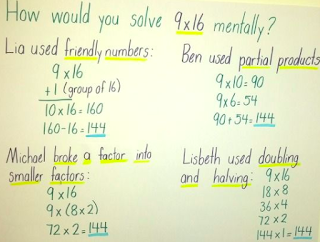
One thing I love about a Number Talk is students are provided with a problem that can be solved in a variety of ways. This allows students to be flexible in their thinking and develop a variety of strategies that will support them when they are faced with cognitively demanding math tasks.
Get these slides here
One thing that is a struggle with this process is number talks can be incredibly time-consuming if you are in a class with 30 plus students who all want to share how they found their answer. As a teacher, I want to honor all of my students’ voices and give them an opportunity to express what they know, but logistically this is not always possible.
This is where technology can come in to support you in making number talks accessible to all students and useful as a formative assessment tool to see where all your students are at and give them a chance to share their thinking.
Here are 6 Fun Ways To Go Digital with Number Talks:
1. Google Slides: During a synchronous meeting with your students share this slide deck in edit mode for students to record their solution to a number talk problem. Students can drag the icon to indicate they would like to explain their thinking or to show agreement with another student’s explanation. 
2. Google Voice: For asynchronous collaboration post an image and/or your question in a Google Doc. Students can work with a partner or independently to share their strategy. All you need to do is create a Google Doc and Share with your students. Then have your students go to the Tools Menu in the Document and click Voice Typing
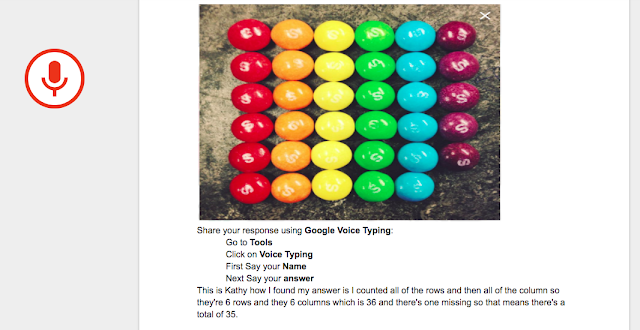 If you want to see how quick and easy this process is just check out my 8 year old son demonstrate how to use Google Voice Typing.
If you want to see how quick and easy this process is just check out my 8 year old son demonstrate how to use Google Voice Typing.
3. Padlet: Post your question on a padlet board. Students can access the board with a URL and automatically post their response by sharing a picture, text or video. Try this out by responding to my number talk wall below with your response. If you have fun doing it imagine what you kids will say!

4. Google Drawing: teachers can illustrate student responses using Google Drawing either on their IPAD or computer. The Scribble tool is a quick way to make illustrations and the student can also illustrate their response using this web based tool . Google Drawing can also be used inside Google Document and it even features math symbols as images.
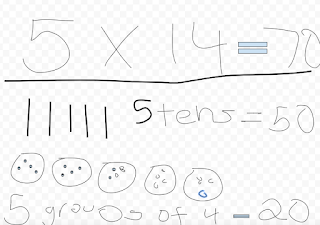 Click here to view in Google Drawing
Click here to view in Google Drawing
5. Flip Grid: Create a video word problem with a student response system that records students thinking in an instant. This process can ensure that students voices are heard and recorded. You can also leave feedback for your students with this process. The videos below were created shared on Youtube
6. Shadow Puppet: This tool can be used by you to make video number talks or by the student to share their response. Students can illustrate their work with paper and pencil then take a picture with an ipad or iphone. Then they can audio narrate their response. This can be a center activity that students complete and provide feedback and comments to their peers. This is an app and not accessible on a computer
If you are an elementary teacher looking to improve your students number sense than number talks are a must. This process instinctively allows me to see where my kids are at, who has grasped the concept and who needs some extra nudging and support. With number talks the nudging and support does not necessarily come from me it can be found in how their peers respond and with web tools I have the power to capture their answers.
Want a book that can put it all together for you with over 100 digital resources and tools then check out my book on Amazon
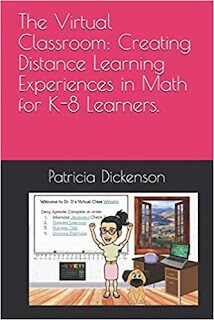
Check out these digital number talk images I have collected and be sure to share yours with me.
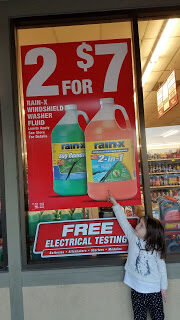
How much for one (unit rate)? How much for 13?
Join our Facebook Group for more conversations, freebies and best practices: https://www.facebook.com/groups/mathconnects/

